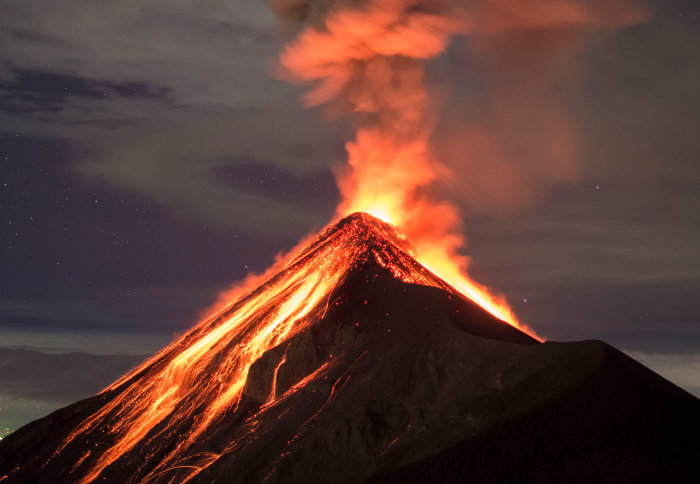
Scientists need to model volcanoes in order to understand when they would pose a threat to communities and, you know, better understand volcanoes because they’re awesome! Computers models tend to be simplifications of the real thing as it is impossible to account for every parameter and model them all at the same time and there is still lots we don’t know about volcanoes. Some models assume that the rate of magma ascent is constant throughout the eruption, some assume that the main vent is a perfect cylinder rather than a complex network of rough openings that taper.
Not all the models have the same assumptions either, but one common assumptions most models have is that the material of the volcano is homogeneous, when in reality it is highly heterogeneous even that the same rock type has varying permeability and porosity.
Dr. Jackie Kendrick a volcanologist at Liverpool University tried to understand what causes this anisotropy in the rocks.
I went to one of her talks at the University of Edinburgh and she talked about a few methods she used to understand this.

She and her team performed a uniaxial compression test (a rock sample being squished from one piston) on a small rock core and tried to measure it’s strength. How much pressure it can withstand without yielding (also know as breaking in a thousand pieces). This a very standard test in geoscience. Knowing when the core would yield they went really close to the limit so that it would not brake and tried compressing and relaxing it so that it would return to it’s ‘normal’ state and repeated this cyclically. They noticed that every cycle permanently damaged the sample. This is analogous to dome inflation and deflation. Over time these cycles of inflation and deflation permanently weaken the rocks and their porosity and permeability change in tandem.
Mini earthquakes (magnitude 0.1) happen many times over during the active phase of a volcano there are many causes for these little (and sometimes bigger) earthquakes one is the inflation and deflation as rocks move past each other and spring back. Magma when flowing slowly deforms like silly putty but when it is accelerated it can break fast like a rock and also cause an earthquake.
Updating models to incorporate findings such as Kendrick’s is how scientists are getting closer and closer to understanding how and when volcanoes will erupt. It is clear from her studies how these findings will help us better predict lava flows underground, look at the image below. It is places like these that help us understand what goes on deep underground.

An interesting paper relating rock failure to volcano slope stability.
A captivating documentary about Krakatoa below.
